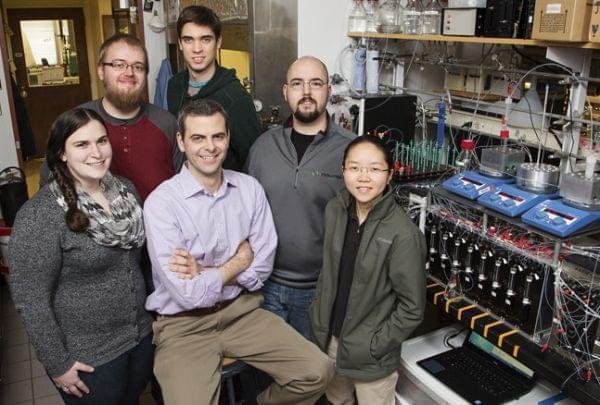U of I Chemist Creates ‘3D Printer For Small Molecules’

Martin Burke chemistry group. Right to left:Junqi Li, Steven Ballmer, Jonathan Lehmann;Michael Schmidt, Andrea Palazzolo. Marty Burke, professor of chemistry, bottom center. Coauthors not shown are Eric Gillis, Seiko Fujii, and Greg Morehouse. (L. Brian Stauffer/University of Illinois)
A University of Illinois chemistry professor says he’s gotten a ‘billion year head start’ on technology for developing new medicines.
Martin Burke, who’s also a physician, is on a team that’s built a machine for making small molecules - the way 3-D printing has helped engineering.
Small molecules are complex chemical structures found in nature, and are used in most medications. But Burke said they can years take for a chemist to develop.
He said by breaking the molecules down, the machine can assemble them in a simpler fashion, like a child’s building blocks.

(Pictured - another view of the team's molecule-making machine. Photo by L. Brian Stauffer/U of I)
“You no longer need a degree in engineering, right – to create potentially very useful new things," Burke said. "And so the vision long-term is that this breakthrough will enable us to create a 3-D printer for small molecules that would be able to empower both specialists and non-specialists to get much better at making them, and therefore much better at accessing their function.”
Burke said the new technology has already been licensed to a company that plans to manufacture medications.
The team described the technology in a paper featured on the cover of the March 13 issue of Science Magazine.
Small molecules can also be applied toward the development of solar cells and LED’s.

